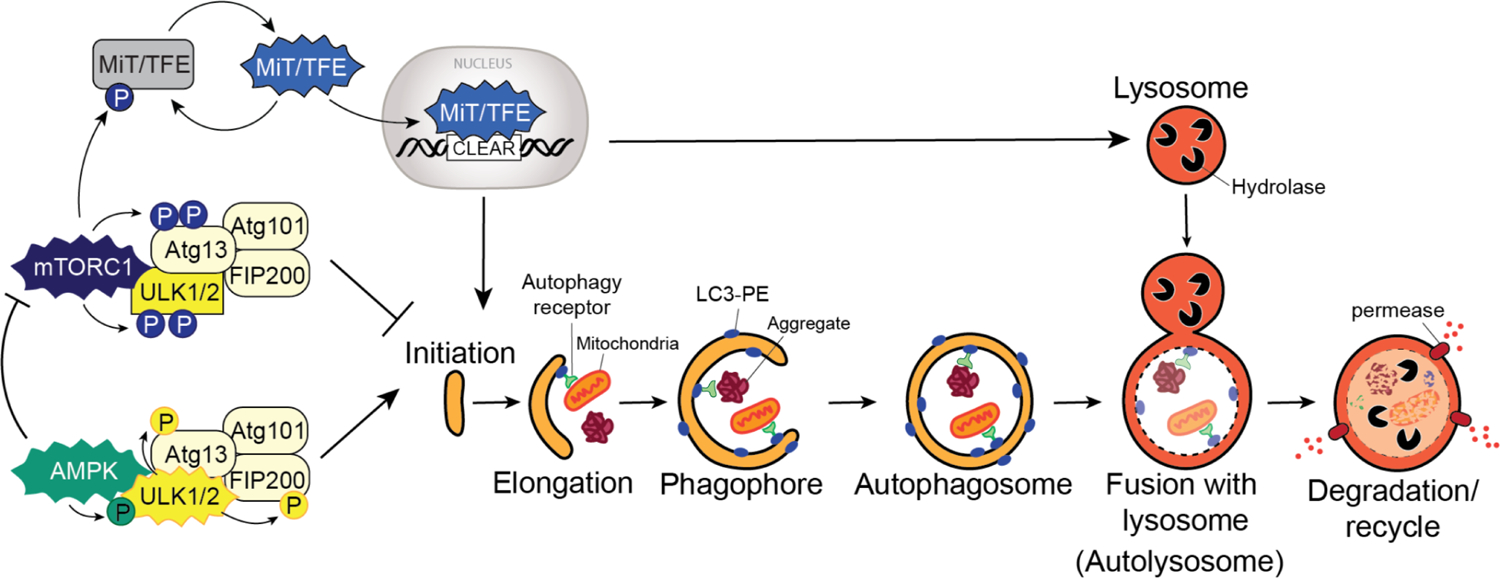Figure 1: The autophagy pathway.

Autophagy is a multi-step process, and its activation is dependent on key upstream regulators. Under nutrient replete conditions, mTORC1 is active and phosphorylates ULK1/2 and Atg13 to block autophagy initiation. mTORC1 also phosphorylated MiT/TFE transcription factors leading to their cytoplasmic retention. Under low nutrient conditions, mTORC1 is inactivated relieving the negative regulation on the pathway. MiT/TFE factors enter the nucleus, recognize CLEAR elements present in the promoters of autophagy and lysosome genes and promote the coordinate transcriptional upregulation of these genes. Similarly, low ATP levels triggers AMPK activation, which phosphorylates ULK1/2 promoting its kinase activity. ULK1/2 in turn phosphorylates Atg13 and FIP200 promoting pathway initiation. AMPK also phosphorylates the mTORC1 subunit, Raptor, leading to suppression of mTORC1 activity. Cancer cells can bypass some, if not all, of these regulator circuits to maintain heighted activation of autophagy, independent of nutrient status or mTORC1/AMPK activity. Capture of intracellular “cargo” (eg. mitochondria, protein aggregates) is mediated by autophagy receptors which bind simultaneously to the cargo and to lipidated LC3 (LC3-II) associated with the growing autophagosome. Autophagosome fusion with lysosomes leads to hydrolase dependent degradation of cargo followed by efflux of degradation products via lysosomal permeases.
